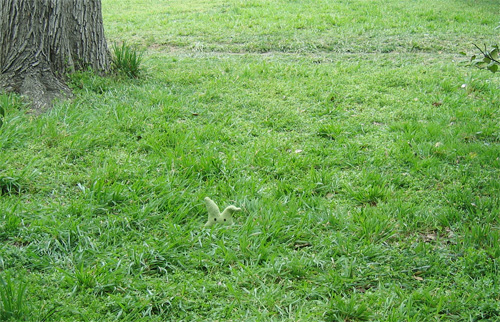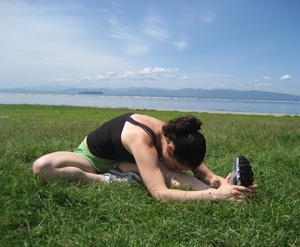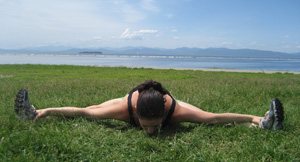



Where do you generally like running? There are a few options available. You can either run on the open road[pavement] or on grass or on a treadmill or on rubber pavements/ jogging rubber tracks in parks.
There are a few advantages and disadvantages over each other.
Personally I prefer pavement running and treadmillls, because both are easily accessible for me.
Being able to run on grass is virtually impossible in India and so is running on rubber tracks, though rubber tracks are available in some places now.
It is quite hard to run on pavements as your knees take quite a hammering. The treadmill is generally softer and gentler on the joints.
The problem with treadmill running is the never changing scenery and the general boredom of being stuck in one spot for some time.
Also while on the treadmill you are not exposed to the elements like sun, wind and rain and hence it is not challenging enough! But sometimes when it is raining real hard and things can get messy, nothing like enjoying the treadmill while indoors!
The good thing with treadmills is you can set the incline, flats, intervals etc. Also when you set the speed you are always catching up with the treadmill so you can run faster than outside, where you might start slacking off once you get tired.
Generally for the same speed you will spend less energy on the treadmill than running outside because it does not expose you to the heat, cold, wind, rains, humidity etc. You can simulate outdoor running better by keeping your treadmill incline at 1%. A problem with treadmills is that you cannot simulate downhill running which is an important component of training.
But if you are training for outdoor events the best thing to do is to train outdoors.
From sportsmedicine.com
Treadmill Running Pros:
No weather, temperature, or terrain issues.
Can stop anytime you need or want.
Can workout while watching tv if you like.
Smooth, cushioned surface is easier on the joints .
No concerns about personal safety.
Outdoor Running Pros:
You can run anywhere.
It's much more functional for daily activities.
You get to enjoy the scenery, get fresh air, notice changing seasons, weather, and enjoy nature.
It's generally more challenging and you expend more calories.
It's likely more motivating. You must complete a distance goal and can't just stop & get off.
Most people report a greater feeling of accomplishment running outside.
You can take new routes and see something new everyday.
Source
A 1% treadmill grade most accurately reflects the energetic cost of outdoor running.A 1% treadmill grade most accurately reflects the energetic cost of outdoor running. Journal of Sports Science, 1996 Aug;14(4):321-7.




